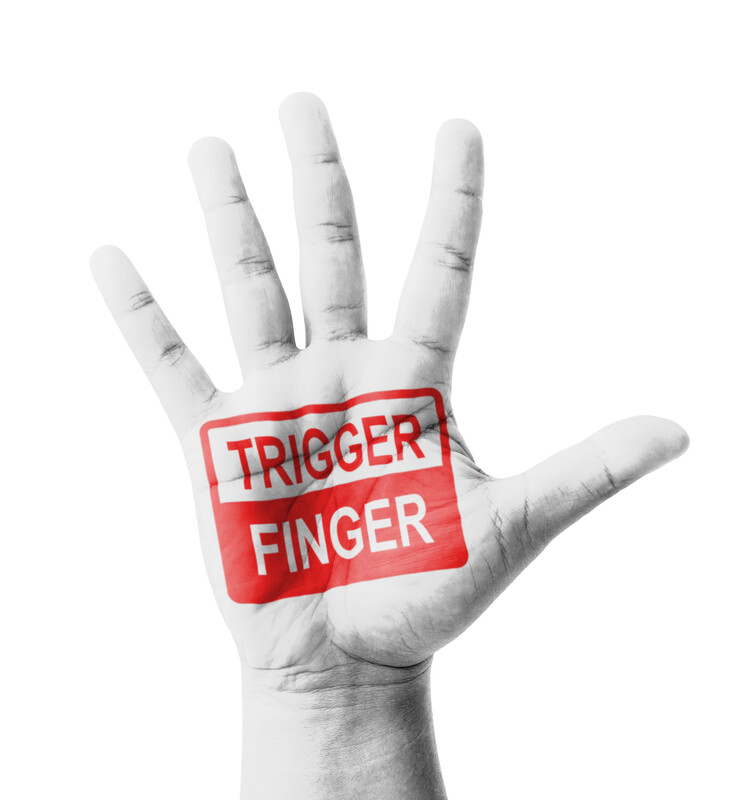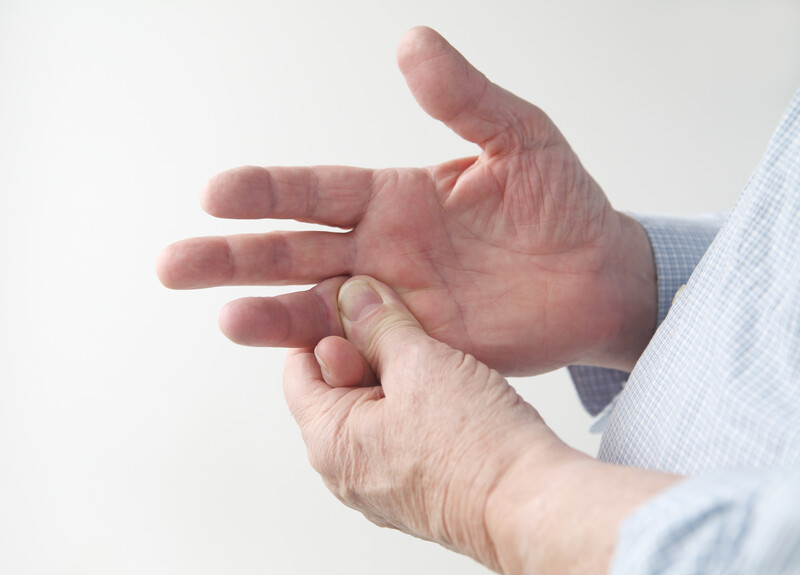The Benefits: Trigger Finger Splints

Trigger Finger is a very common ailment. It happens when your finger locks or clicks when it’s bent and then suddenly pops back when trying to straighten it. “Triggering” commonly occurs at night or with activities that require repeated gripping or pinching, such as holding a pen. Trigger Finger Splints are used to prevent your fingers from locking in place and can help alleviate the pain associated with this condition. In this blog post, we will discuss the benefits of trigger finger splints, how they work, why you should consider them for yourself if you have been diagnosed with a trigger finger, and what type of people would benefit from using them most!
How Does Trigger Finger Occur?
Trigger finger occurs when the tendon that allows you to bend your finger becomes entrapped as it goes through a small tunnel that is located on the palm side of your hand. This can cause inflammation and swelling, which then may result in locking or clicking due to this space being too tight for movement.
In some cases, the trigger finger can be caused by an injury to the tendon. This is more common in those who are involved in sports, such as tennis and basketball players, where they may experience a sudden forceful pulling of their fingers during play causing damage to this small tunnel that holds the tendons.
Trigger Finger Issues
Trigger fingers can also be caused by arthritis, which is a condition that causes pain and swelling in the joints of your body. This often occurs due to wear and tear over time where cartilage becomes damaged. If you have arthritis, your doctor may prescribe a splint to help decrease inflammation and provide relief from the pain.
What are Trigger Finger Splints?
There are many different types of braces available for those suffering from this condition including:
- Trigger finger wrist brace
- Trigger finger splint
- Trigger thumb immobiliser
There are many different types of braces available for those suffering from this condition including:
- Trigger Finger Splints
- Trigger Thumb Immobiliser
- Wrist Brace For Carpal Tunnel Syndrome
When should you wear a splint?
If you are diagnosed with a trigger finger, it is important to wear a splint during activities that may cause this condition to worsen. It’s also beneficial if the symptoms of your trigger fingers are affecting your sleep or limiting daily tasks.
What does wearing one look like?
Trigger Finger Splints usually come in two basic forms: night splints and finger braces.
Night splints are worn when you sleep and prevent your fingers from bending in a way that may cause the tendons to become trapped or irritated, causing more pain during the day with activities such as writing or typing on your phone.
Finger Splints can be custom-made for each patient depending on their specific needs and are worn during the day either with a glove or without. This type of splint is designed to keep your fingers straight and prevent them from bending in a way that may cause damage to the tendon.
Why would you want one?
Trigger Finger Splints help alleviate pain associated with trigger fingers, but they also protect against more damage being done to your tendons. If you have been diagnosed with trigger finger, it is important to wear a splint during activities that may cause this condition to worsen. It’s also beneficial if the symptoms of your trigger fingers are affecting your sleep or limiting daily tasks.
How do you choose the right one?
When choosing a trigger finger splint, it is important to consider what activities cause your fingers to lock or click. This will help determine which model of splints would be best suited for you. For example, if thumb triggering occurs while sleeping on your side at night but not during normal daily tasks then a night splint that holds your digit in the straight position may be most beneficial. If you are active and experience triggering while playing sports or during daily activities, then a finger brace would provide more relief.
How Do They Work?
Trigger Finger Splints work by keeping the tendon in a straight position and stopping it from becoming tight or bent in a way that may cause you to trigger.
What are the Benefits of Trigger Finger Splints?
- Prevent fingers from locking in place.
- Relieve pain associated with this condition.
- Helps improve grip strength and dexterity.
- Can help alleviate symptoms during sleep, which often worsens the problem due to lack of movement when you’re trying to rest.
- Can help improve your quality of life by allowing you to perform simple day-to-day tasks without pain or interruption, such as holding a pen or opening doors.
Who will likely not benefit from trigger finger splints?
People who have an underlying medical condition that restricts their movement, such as arthritis or severe nerve damage, may not be able to use these types of devices since they restrict hand and finger movement even more than triggering does. People with diabetes should also avoid these types of devices since blood flow to the hand may already be compromised, which can make tissue damage more likely.
Trigger fingers are a condition that can cause pain and discomfort, but trigger finger splints offer relief to those suffering from this condition.